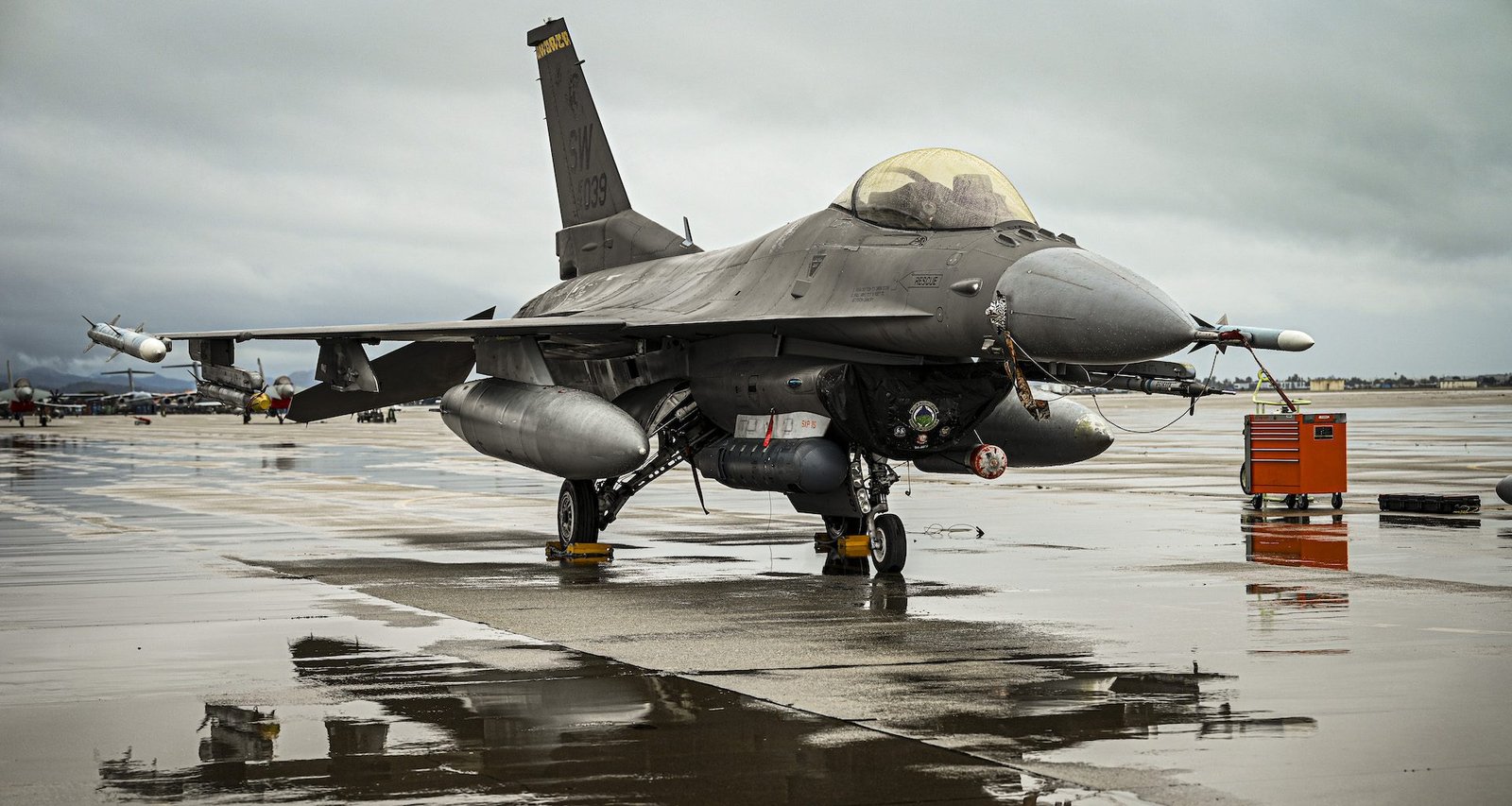A lack of situational awareness, confusion over different types of gas and brake pedals, and close proximity between fighter jets led to $30 million in damages to an F-16 jet last November, the Air Force’s Accident Investigation Board found.
The report, released on Oct. 17 by U.S. Air Forces Europe – Air Forces Africa but finished at least two months earlier, outlines the many issues along the way that led to the mishap, when a weapons loader or “jammer” crashed into an F-16. Essentially, one error cascaded into the next, creating a snowball effect that eventually heavily damaged a F-16 fighter.
The Nov. 17, 2023 incident took place at an undisclosed location in southwest Asia. A F-16 fighter jet, assigned to the 555th Fighter Squadron was parked just 60 feet away from a F-15E Strike Eagle from the 48th Fighter Wing, which was in the process of being loaded with munitions.
A three-person team of weapons loaders was working on the F-15E, using an MJ-1 weapons loader, also known as a “jammer” or “bomb lift.” At approximately 10 p.m. local time, one member (known in the report as “MXLC2”) was driving the jammer in reverse and found that he couldn’t stop it. The jammer slammed into the F-15E, causing MXLC2 to hurt his head and back, and pinning him to the dashboard of the weapons loader. It then hit a tire on the jet followed by a fuel tank, throwing the driver off of the vehicle. The jammer kept moving, this time towards the F-16 only a few dozen feet away, crashing into its right fuel tank. That fuel then leaked out, a spark from the weapons loader ignited it, and soon a fire shot up, “engulfing” the weapons loader and part of the F-16.
Subscribe to Task & Purpose today. Get the latest military news and culture in your inbox daily.
Images shared in the report, as well as additional ones posted to social media but not included in the official findings, show the fuselage of the jet heavily burned. No one was seriously injured, but the Accident Investigation Board found significant issues with maintenance standards and poor documentation played a role in contributing to the mishap.
Investigators found that the operator of the jammer lost situational awareness of what was around him. When the jammer started to careen out of his control, the report said, he failed to carry out emergency shutdown procedures.
Investigators noted that one major issue was confusion over the model jammer being used. Two models used by the Air Force are similar and look nearly identical, but have key differences, including the location of the brake pedal. One model, which was used, has the pedal only one inch away from the accelerator pedal. The other has an 11-inch gap.
“This means it is more likely than not that MXLC2 was engaging the accelerator pedal when he thought he was engaging the brake pedal,” the report notes. “This is supported by eyewitness testimony that MMJ-1 ‘jerked back’ and accelerated backwards.”
Beyond the confusion by the jammer operator, the Accident Investigation Board found several other issues that played a role in leading to the fire. Maintainers at the undisclosed installation had a “loose culture of adherence to Air Force standards and technical procedures.” That included incorrect maintenance procedures, missing documentation and using equipment with “apparent deficiencies.”
Details about the exact location or mission these fighter jets were on were not made clear in the report. The 48th Fighter Wing, based out of RAF Lakenheath in the United Kingdom, deployed to southwest Asia in October 2023. The 494th Fighter Squadron, part of that wing, took part in intercepting missiles and drones fired by Iran towards Israel in April 2024.

